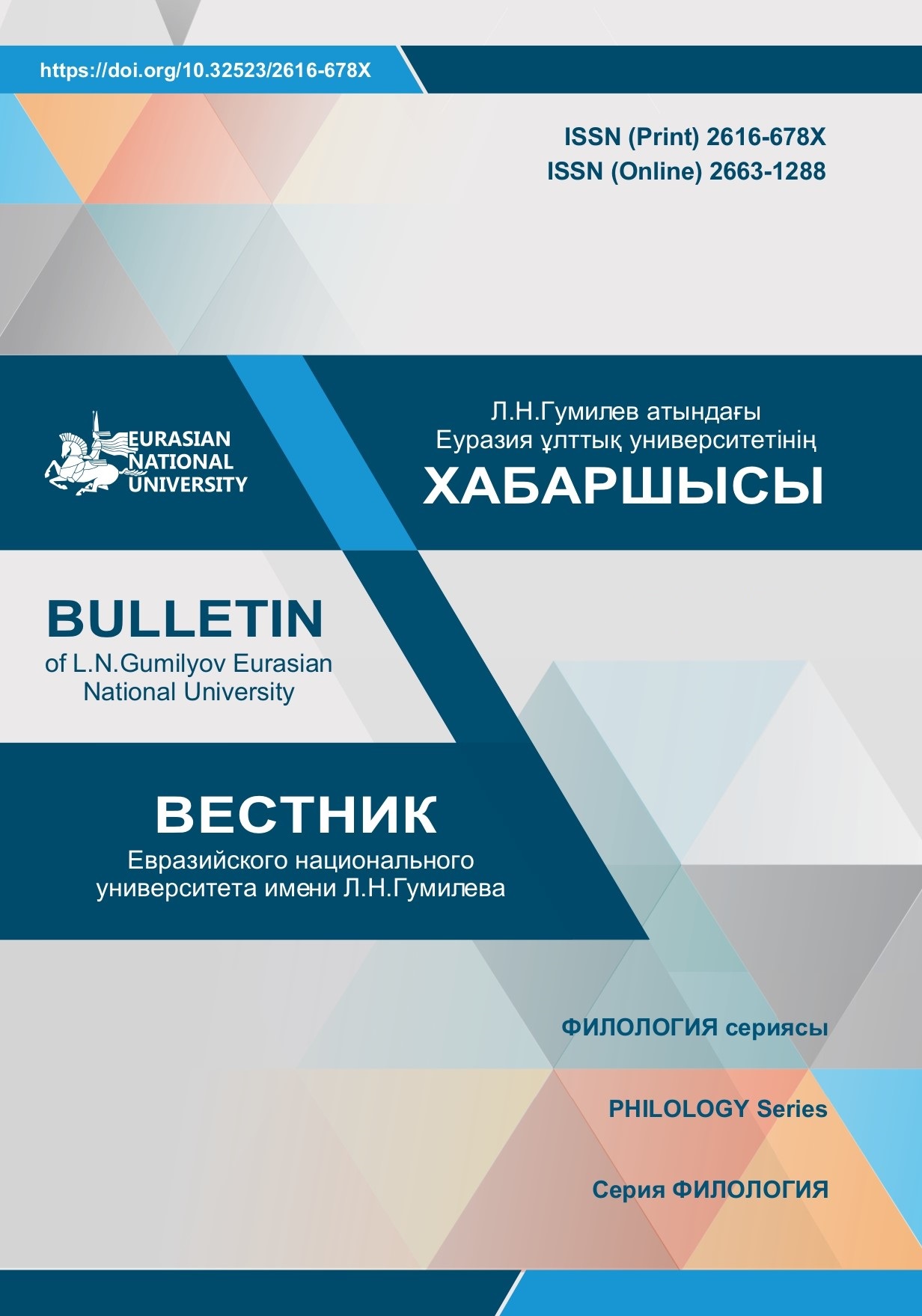Mechanisms of explicating ethno-cultural aura of an autochthonous and translated text
Views: 215 / PDF downloads: 170
DOI:
https://doi.org/10.32523/2616-678X-2022-141-4-92-105Keywords:
autochthonous literary text, ethno-cultural aura, narrative discourse, concept, ethno-linguistic image, metaphorAbstract
The article deals with the problem of perception and understanding of ethno-cultural aura in literary
text. It is proved that the perception of literary text as a set of ethno-linguistic images requires the recipient’s
emotional and intellectual inclusion in a mental dialogue with the text’s autochthonous world. The importance
of subject-sensory perception for adequate interpretation of the text’s conceptually significant meanings is
emphasized. The concepts “qonyr kuz” and “aq zhauyn” are represented by ethno-linguistic images radiating
autochthonous aura. Perception occurs through comprehension of linguistic means creating in imagination
object-sensory images. Attention is focused on creating ethno-linguistic images of autochthonous literary text
in the story and on cognitive-metaphorical origins of its ethno-cultural aura. The analysis showed that text
understanding is a step-by-step process, including emotional and sensory perception of the image at sensations’
level, experience as text perception based on subjective life experience (incorporating it in own semantic space),
and interpretation as mental decomposition of integral text into its components and mental connection of these
components into a whole. The linguoculturological interpretation of the key concepts “zhauyn”, “qonyr”,
“kuz” revealed the individual author’s meaning of the discourse-generating concept «qonyr kuz», which is
metaphorically disclosed in text through the image of white rain (aq zhauyn). The visual-expressive means
of language contributing to the embodiment of the considered ethno-linguistic images are determined. The
analysis made it possible to identify the conceptual metaphor «life is a winding road» implicitly presented in
the text as the most important constituent of the story’s narrative discourse.







